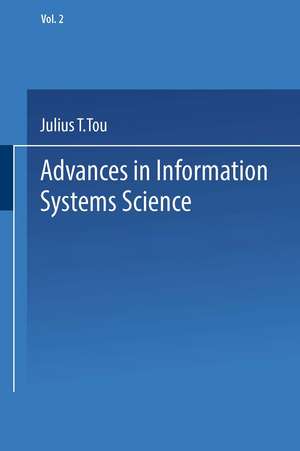Advances in Information Systems Science: Volume 2: Advances in Information Systems Science
Autor Julius T. Touen Limba Engleză Paperback – 16 dec 2013
| Toate formatele și edițiile | Preț | Express |
|---|---|---|
| Paperback (9) | 383.33 lei 6-8 săpt. | |
| Springer Us – 30 ian 2012 | 383.33 lei 6-8 săpt. | |
| Springer Us – 27 feb 2013 | 388.72 lei 6-8 săpt. | |
| Springer Us – 3 feb 2012 | 389.11 lei 6-8 săpt. | |
| Springer Us – 30 noi 2012 | 390.46 lei 6-8 săpt. | |
| Springer Us – 27 sep 2011 | 390.84 lei 6-8 săpt. | |
| Springer Us – 30 ian 2012 | 390.84 lei 6-8 săpt. | |
| Springer Us – 23 ian 2013 | 391.02 lei 6-8 săpt. | |
| Springer Us – 16 dec 2013 | 391.22 lei 6-8 săpt. | |
| Springer Us – 19 ian 2012 | 391.40 lei 6-8 săpt. |
Preț: 391.22 lei
Nou
Puncte Express: 587
Preț estimativ în valută:
74.86€ • 78.37$ • 61.94£
74.86€ • 78.37$ • 61.94£
Carte tipărită la comandă
Livrare economică 05-19 aprilie
Preluare comenzi: 021 569.72.76
Specificații
ISBN-13: 9781489958433
ISBN-10: 1489958436
Pagini: 368
Ilustrații: XV, 351 p.
Dimensiuni: 152 x 229 x 19 mm
Greutate: 0.49 kg
Ediția:1969
Editura: Springer Us
Colecția Springer
Seria Advances in Information Systems Science
Locul publicării:New York, NY, United States
ISBN-10: 1489958436
Pagini: 368
Ilustrații: XV, 351 p.
Dimensiuni: 152 x 229 x 19 mm
Greutate: 0.49 kg
Ediția:1969
Editura: Springer Us
Colecția Springer
Seria Advances in Information Systems Science
Locul publicării:New York, NY, United States
Public țintă
ResearchCuprins
1 Theory of Algorithms and Discrete Processors.- 1. Introduction.- 2. Discrete Processors.- 3. Examples of Discrete Processors.- 4. Computers and Discrete Processors.- 5. Systems of Algorithmic Algebras.- 6. Application of Algorithmic Algebras to Transformations of Microprograms.- 7. Equivalence of Discrete Processors.- 8. Equivalence of Automata with Terminal States Relative to an Automaton without Cycles.- 9. Specific Cases of Solutions to the Equivalence Problem.- 10. Conclusions.- References.- 2 Programming Languages.- 1. Introduction.- 2. The Basic Linguistic Nature of Programming Languages.- 3. Programming Languages and Semiotics.- 4. The Formal Definition of Programming Lan guages.- 5. The Definition of Programmable Automata and their Languages.- 6. Parallel Concurrent Processes.- 7. Machine Languages.- 8. Special and General-Purpose Algorithmic Languages.- 9. Special Problem-Oriented Languages.- 10. Simulation Languages.- 11. Conversational Languages.- 12. Conclusion.- References.- 3 Formula Manipulation—The User’s Point of View.- 1. Introduction.- 2. Different Types of Formula Manipulation Systems.- 3. Toward a Mathematical Utility.- 4. The Formula Manipulation Language Symbal.- 5. The Syntax of Symbal.- 6. The Basic Symbols and Syntactic Entities.- 7. Expressions.- 8. The Remaining Parts of the Language.- 9. Standard Variables.- 10. Techniques and Applications.- 11. Summary.- References.- 4 Engineering Principles of Pattern Recognition.- 1. Introduction.- 2. Basic Problems in Pattern Recognition.- 3. Feature Selection and Preprocessing.- 4. Pattern Classification by Distance Functions.- 5. Pattern Classification by Potential Functions...- 6. Pattern Classification by Likelihood Functions.- 7. Pattern Classification by Entropy Functions...- 8. Conclusions.-References.- 5 Learning Control Systems.- 1. Introduction.- 2. Trainable Controllers.- 3. Reinforcement Learning Control Systems.- 4. Bayesian Learning in Control Systems.- 5. Learning Control Systems Using Stochastic Approximation.- 6. The Method of Potential Functions and its Application to Learning Control.- 7. Stochastic Automata as Models of Learning Controllers.- 8. Conclusions.- Appendix. Stochastic Approximation—A Brief Survey.- References.- Author Index.





